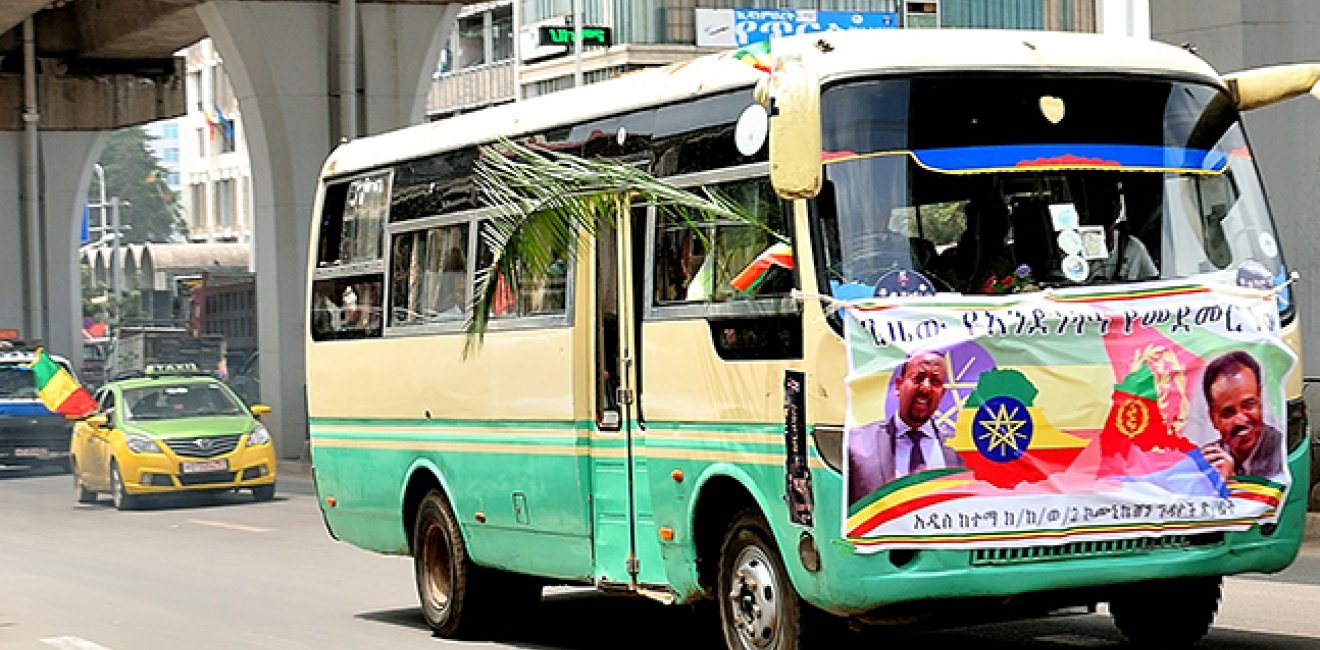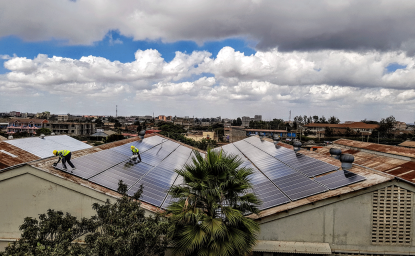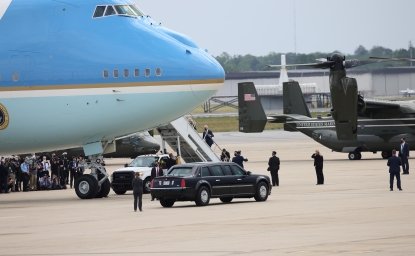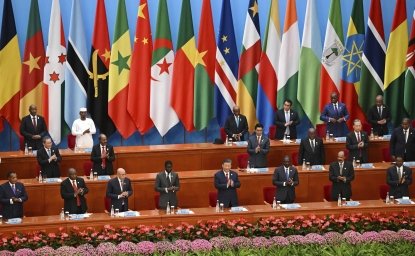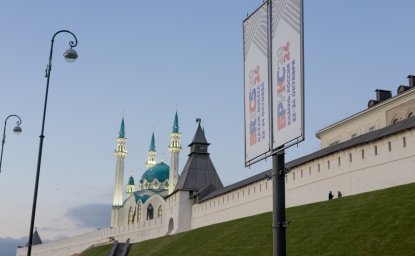
A blog of the Africa Program
After Abiy Ahmed was sworn-in as Ethiopia's prime minister (PM) in April 2018, his government engaged in normalization talks with Eritrea. In July 2018, the two countries signed a historic agreement that ended two decades of "no peace and no war." Following this, people-to-people relations resumed, embassies reopened, air flights restarted between Addis Ababa and Asmara, international telecommunication was fixed, and, most notably, border crossings reopened, allowing for free movement of people in both directions. These achievements helped Prime Minister Abiy garner huge popular support within and outside of Ethiopia, and contributed to his being awarded the 2020 Nobel Peace Prize. However, while the leaders of both countries have held rounds of further bilateral talks, progress toward full normalization of relations between Ethiopia and Eritrea has been slow. Obstacles include concerns regarding the transparency, pace, and institutionalization of the normalization process. Also at fault are questionable tactics such as elite-driven agreements, exclusionary public diplomacy, and lack of grassroots dialogue.
Elite-driven Agreements
The normalization agreements between Prime Minister Abiy and Eritrean President Isaias Afwerki were elite-driven rather than policy-driven, and were not made public. This non-transparent tactic raised doubts within the public on both sides of the border. To date, the national benefit of the Abiy-Isaias relationship is unclear to the public in either country, as well as to international observers. This has called into question the entirety of the peace process, its results, and its sustainability.
The perception of "elitism" was reinforced by the fact that the voices of the border communities who had been advocating for people-to-people diplomacy were not consulted during the peace process. A consequence of this was that, immediately after PM Abiy announced in 2018 his acceptance of the 2002 UN boundary commission ruling, Ethiopians living in the disputed areas (Badme, Zalambessa, and their environs) held a peaceful demonstration against the government's move. The protestors called instead for people-to-people diplomacy first, as a way to ensure appropriate consideration was given to local narratives about the past, present, and future connections and interdependence of the communities most affected by the boundary ruling.
The border, initially opened following the signing of the accord in 2018, was closed once again on the Eritrean side in April 2019. Nonetheless, people on both sides of the border continue to find ways to cross informally. The main reason Asmara re-closed the border was that since the peace deal was not accompanied by any meaningful internal transformation in Eritrea, the border openings and newly free movement of people resulted in a surge of Eritrean refugees fleeing into Ethiopia. In 2018 alone, the daily average of Eritrean refugees crossing into Ethiopia reached approximately 390, up from 53 prior to the reopening of the border. This forced President Isaias to close the border to stop the outflow of his populace.
Exclusionary Public Diplomacy
Following the 2018 normalization agreement, both countries undercut the accord by engaging in exclusionary public diplomacy. In February 2019, an Eritrean artist group of over 60 members from different social backgrounds traveled to Addis Ababa and some regional capitals (Hawasa and Bahirdar). Similarly, an Ethiopian artist group of over 50 members visited different places in Eritrea such as Asmara, Keren, and Batsie. However, the Ethiopian group lacked clarity in its composition, with the selection process leaving out artists from Tigray and Afar, which border Eritrea and are home to thousands of people who were direct victims of the war and post-war socio-economic hardship. This oversight was exacerbated by the fact that the Eritrean artist group did not visit Tigray and Afar.
Resistance from Regional Ruling Party
Prime Minister Abiy's rapprochement with Eritrea faces strong resistance from the Tigray People's Liberation Front (TPLF), the ruling party in Ethiopia's Tigray region, which shares over 500 km of border with Eritrea and is skeptical of the rapprochement. The TPLF stated that if the two countries were going to implement the peace deal, grassroots voices must be included in the dialogue. In February 2020, TPLF leader Debretsion Gebremichael stressed the importance of having a peace process that included all relevant stakeholders, not only the political elite from both sides. This stance helped rally ethnic Tigrayans behind the TPLF. Given Tigray's influence and location, implementation of the peace accord will be difficult if not impossible without TPLF support for it.
Thus for the peace agreement to succeed, work is needed to rebuild a relationship between the TPLF and President Isaias' Eritrean People's Liberation Front (EPLF). The TPLF was a dominant force in Ethiopian politics until the election of Prime Minister Abiy in 2018, and was closely tied to the EPLF during the liberation struggle against the Derg military regime from 1976 to 1991 (when Eritrea was part of Ethiopia) and prior to the breakout of the Eritrean-Ethiopian war in 1998. Since PM Abiy's election in 2018, Eritrean authorities have considered the TPLF as a fragile political entity in the Ethiopian political system given that the leadership change forced several leading TPLF political and security figures to leave federal government. Nonetheless, the TPLF is still a strong political force in Ethiopia, particularly in the Tigray region, thus the peace process and bilateral socio-economic cooperation are vulnerable without its support. A political compromise between Prime Minister Abiy and TPLF leaders would go a long way toward ensuring the sustainability of the Ethiopia-Eritrea normalization.
No Change on Eritrean Youth's Demand
Another false hope of the 2018 peace agreement is that it led many to believe the Eritrean government would end the currently indefinite duration of compulsory national service. This has not come to pass, however, with the unfortunate result that thousands of Eritrean youths have left the country to avoid indefinite, compulsory national service. In the spring of 2020, the registered Eritrean refugee population was over 172,000 in Ethiopia and over 122,000 in Sudan. Among these Eritrean refugees are high numbers of unaccompanied and separated children.
Many Eritreans have also fled to Libya, with harrowing results. The recent United Nations Report on the Situation of Human Rights in Eritrea expressed deep concern for Eritrean migrants and refugees caught up in Libya's ongoing conflict. Thousands of Eritreans are found in terrible conditions in Libyan warehouses and detention centers. The report also disclosed that huge numbers of Eritreans were kidnapped by traffickers and armed elements in Libya and tortured, mistreated, and sold to other groups. Eritrean women and children held captive by armed elements in Libya are particularly vulnerable to rape, sexual slavery, and other forms of gender-based violence. The extortion for ransom of Eritrean migrants and refugees in Libya continues to operate through a vast system of money transfers extending across several countries.
Getachew Zeru is an Assistant Professor at the Institute of African Governance and Development at Ethiopian Civil Service University, Addis Ababa, Ethiopia. He was a former Southern Voices Scholar Network for Peacebuilding in spring 2015.
Photo source: People of Ethiopia welcome Eritrea's President on July 14, 2018, in Addis Ababa, Ethiopia. Editorial Credit: Hailu Wudineh Tsegaye/Shutterstock ID: 1133923820. Source: https://www.shutterstock.com/image-photo/people-ethiopia-welcomes-eritreas-president-14-1133923820.
Author
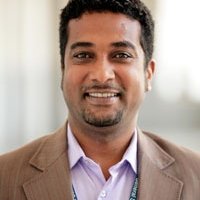
Lecturer, Institute for Peace and Security Studies, Addis Ababa University

Africa Program
The Africa Program works to address the most critical issues facing Africa and US-Africa relations, build mutually beneficial US-Africa relations, and enhance knowledge and understanding about Africa in the United States. The Program achieves its mission through in-depth research and analyses, public discussion, working groups, and briefings that bring together policymakers, practitioners, and subject matter experts to analyze and offer practical options for tackling key challenges in Africa and in US-Africa relations. Read more

